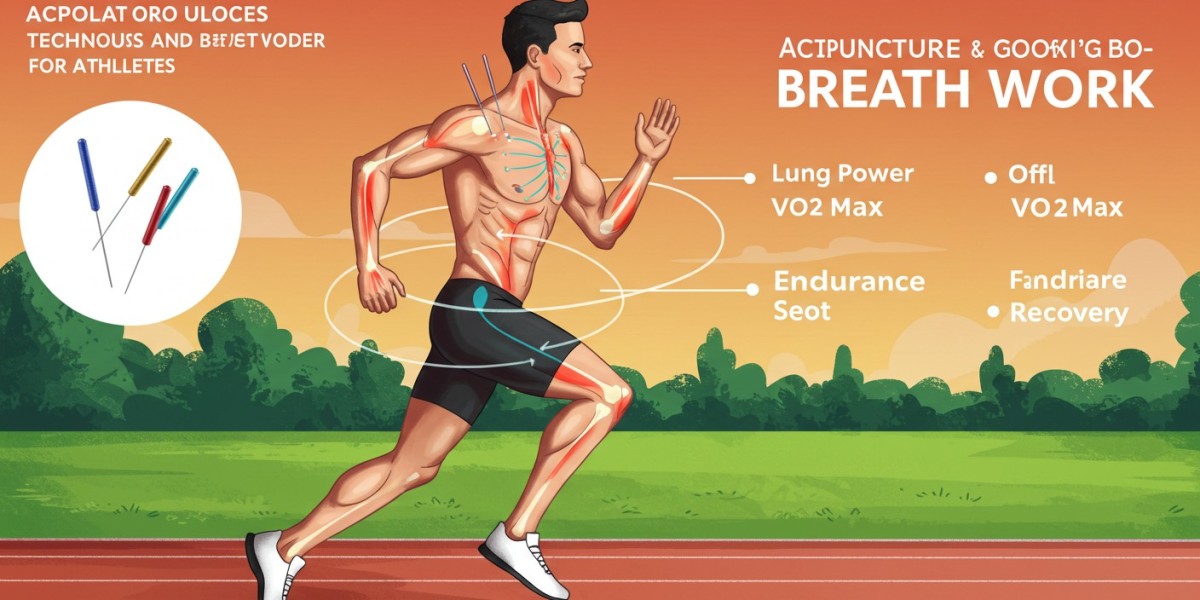Introduction
For athletes, peak performance often comes down to one critical factor: oxygen. The body’s ability to utilize oxygen efficiently—measured by VO₂ max—directly impacts endurance, strength, and recovery. Whether you’re a marathon runner, swimmer, or football player, how well your lungs and cardiovascular system deliver oxygen determines how long you can push before fatigue sets in.
While training regimens, nutrition, and recovery tools dominate sports science, two practices are emerging as game-changers: acupuncture and breathwork. Together, they optimize lung capacity, regulate energy, and improve oxygen utilization. More athletes are now exploring acupuncture for sports performance as a holistic way to unlock untapped potential in both body and mind.
Why VO₂ Max and Lung Power Matter
VO₂ max is the maximum rate at which your body consumes oxygen during intense exercise. The higher your VO₂ max, the more efficiently your body can deliver oxygen to working muscles. A strong VO₂ max is linked with:
Greater endurance in long-distance events
Faster recovery after sprints or high-intensity intervals
Reduced fatigue during prolonged competition
Enhanced resilience against injury and overtraining
Athletes often focus on high-intensity training and interval workouts to push VO₂ max higher. However, integrating breathwork and therapies like acupuncture for sports performance can give an added edge by improving not just physical capacity, but also nervous system regulation and energy flow.
How Breathwork Improves Athletic Performance
Breathwork isn’t just about “breathing deeply.” Structured breathing techniques—used by athletes, yogis, and even Navy SEALs—train the diaphragm, expand lung capacity, and optimize oxygen exchange.
Popular methods include:
Diaphragmatic breathing: Strengthens core breathing muscles and reduces reliance on shallow chest breathing.
Box breathing: Enhances focus, reduces stress, and promotes rhythmic breathing patterns during competition.
Nasal breathing: Improves nitric oxide production, which increases oxygen delivery and vascular efficiency.
Breath-hold training: Boosts CO₂ tolerance, allowing the body to use oxygen more effectively.
When athletes combine these methods with acupuncture for sports performance, they can align both physical breathing mechanics and the body’s internal energy systems.
The Role of Acupuncture in Lung Power and VO₂ Max
Acupuncture has long been used in Traditional Chinese Medicine to strengthen the lungs, regulate qi (energy), and improve stamina. Modern research now validates its benefits:
Respiratory function: Acupuncture stimulates points that improve lung capacity and airflow.
Circulatory efficiency: It enhances blood oxygenation, ensuring muscles get the fuel they need.
Stress reduction: By regulating the nervous system, acupuncture allows athletes to breathe more steadily under pressure.
Faster recovery: Reduced inflammation and improved oxygen delivery mean less downtime after intense workouts.
Several studies published in The Journal of Alternative and Complementary Medicine demonstrate that acupuncture increases aerobic capacity in athletes. When integrated with breath training, acupuncture for sports performance amplifies gains by targeting both physical and energetic pathways.
Synergy Between Acupuncture and Breathwork
While each modality has its benefits, the real power lies in their combination.
Better lung efficiency: Breathwork strengthens lung muscles, while acupuncture reduces airway resistance and stress-related tightness.
Improved oxygen utilization: Acupuncture boosts circulation, while breathwork trains the body to maximize oxygen uptake.
Enhanced recovery: Together, they lower cortisol levels, balance energy, and reduce post-training fatigue.
Mental clarity and focus: Breath control techniques paired with acupuncture’s calming effect give athletes a sharper competitive edge.
This synergy is why elite performers are incorporating acupuncture for sports performance alongside structured breathing routines as part of holistic training.
Acupuncture Points for Respiratory Strength
Practitioners often target specific points known to benefit lung function and endurance:
LU-1 (Zhongfu): Opens chest, improves lung qi.
LU-9 (Taiyuan): Enhances respiratory capacity and circulation.
ST-36 (Zusanli): Boosts energy and supports immune function.
CV-17 (Shanzhong): Regulates breathing and reduces chest tightness.
When combined with post-training breathwork sessions, these points help athletes feel less winded, recover faster, and sustain high performance levels longer.
Evidence from Sports and Medicine
The connection between acupuncture, lung function, and performance is supported by growing research:
A 2018 study in Medical Acupuncture found significant VO₂ max improvements in endurance athletes after acupuncture sessions.
Research in The Journal of Sports Medicine and Physical Fitness confirmed that acupuncture enhanced aerobic capacity and reduced fatigue in competitive cyclists.
Breathwork studies, such as those from Frontiers in Physiology, demonstrate how controlled breathing improves endurance, resilience, and oxygen efficiency.
Together, these findings strengthen the case for acupuncture for sports performance as part of a modern athlete’s training arsenal.
Practical Integration for Athletes
For best results, athletes can structure acupuncture and breathwork into their weekly routines:
Pre-training: Short breathwork sessions (e.g., box breathing) to enhance focus, paired with acupuncture to warm up energy systems.
Mid-week recovery: Acupuncture treatments targeting lung and circulation points to speed recovery.
Pre-competition: Breathwork to calm nerves and improve oxygen use, with acupuncture sessions focused on stress reduction.
Post-event: Acupuncture for inflammation and breathwork for relaxation to promote deep recovery.
Athletes who combine consistent sessions of acupuncture for sports performance with structured breath training often see improvements in both physical endurance and mental resilience.
Beyond Performance: Long-Term Benefits
While the immediate goal is often better VO₂ max and competition readiness, these practices also benefit long-term health:
Stronger immune system through improved lung function
Better stress management during career highs and lows
Lower risk of overtraining injuries due to faster recovery
Lifelong resilience in respiratory and cardiovascular health
For professionals and amateurs alike, acupuncture and breathwork offer sustainable, non-invasive tools for health and performance longevity.
Conclusion
Athletes are constantly looking for an edge—something to help them recover faster, breathe deeper, and perform longer. While training, nutrition, and rest remain essential, combining acupuncture with breathwork opens a new dimension of possibility.
By enhancing lung power, improving VO₂ max, and aligning body and mind, acupuncture for sports performance goes beyond temporary fixes. It creates a foundation of balance, resilience, and strength that translates into better results on the track, in the pool, or on the field.
For athletes serious about reaching peak potential, integrating these holistic practices may be the key to staying one breath ahead of the competition.






